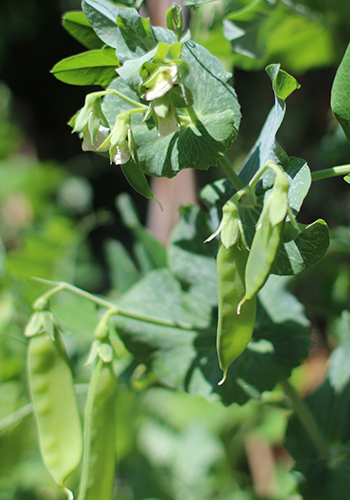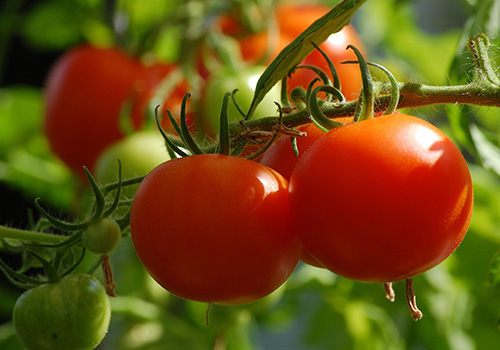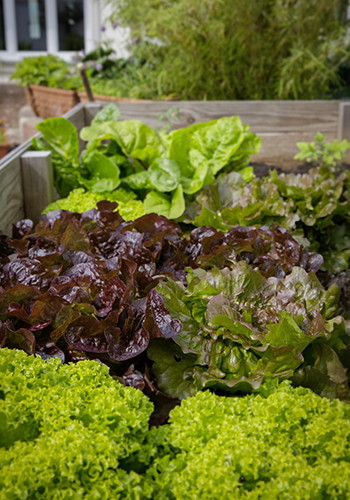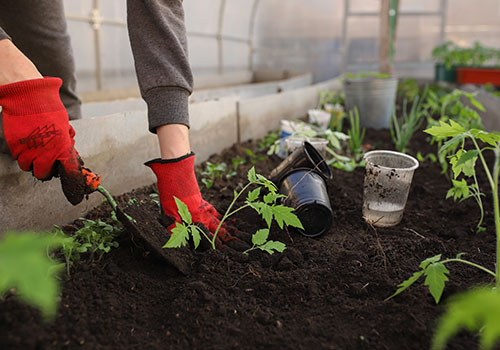The Dance of the Veggies P1: Succession Planting
What is Succession Planting?
Simply put, succession planting means growing more than one crop, or growing several rounds of the same crop, in the same space within the same year. Does that sound a little intimidating? Don't worry, it's not as complex as you might think! If you want to make the most of your gardening space, energy, and budget, consider trying succession planting in whatever garden space you are working with.
This approach can be more holistic, and cyclical, and it works especially well in our climate. When veggie gardeners first start out, they may end up with large, one time harvests that overwhelm their own food needs, and then are left trying to share or preserve their harvest as fast a they can before it sours. Alternately, gardeners who practice some form of succession planting can collect daily, delightfully manageable harvests of fresh veggies and herbs year-round, if you plant your seeds right.
Benefits of Succession Planting
Succession planting can increase your total yields in a given amount of space. You’ll be making full use of that space at all points throughout the growing season, which makes succession planting an especially good fit for those working with small spaces or even container gardens, where every square foot counts.
Imitating nature by making full use of the available space is also great for your living soil, which is in turn great for your plants. When soil is left bare of vegetation, or protective covering, it slowly compacts and leaches nutrients.
The staggering amount of life in your soil ecosystem didn’t evolve over countless millennia in bare dirt. Soil organisms, from pest-controlling insects to bacteria that create natural fertilizer, rely on an ever-changing, ever-present abundance of plant life to thrive. In exchange they perform all kinds of ecological services to help your plants grow, produce, fend off pests, and resist disease.
And speaking of pests, succession planting can help with those in other ways as well. It can be devastating when your precious head of lettuce is devoured. It’s much less devastating to let the slugs help you thin a bit early in the season, leaving the strongest plants to keep on growing while you also enjoy some of those early thinnings for yourself. Meanwhile, growing several different crops together in the same space can confuse pests and increase habitat for beneficial insects.
Which crops are a good fit for succession planting?
 In the maritime Northwest, succession planting generally works best with crops that mature quickly and don’t mind cool weather. I like to simplify it down to three main groups: greens, roots, and peas.
In the maritime Northwest, succession planting generally works best with crops that mature quickly and don’t mind cool weather. I like to simplify it down to three main groups: greens, roots, and peas.
There are a few exceptions, which I’ll talk about in a moment. But in general, salad greens like lettuce, arugula, and spinach are great for succession planting. Root crops that do very well using these methods include beets, carrots, and radishes. Peas are also great candidates because they can germinate and grow earlier in the season than almost any other crop, and they improve the soil they grow in rather than depleting it.
Since these crops all mature relatively quickly and can survive in the garden from early spring through to late fall or even all winter long, there’s time within their growing seasons to plant, tend, and harvest them several times over.
Which crops are generally not a good fit?
Some crops are not great candidates for succession planting in our climate. Plants that take a long time to mature and can only survive during the warmest, sunniest summer weather need all the time and space they can get to reach their full potential. Those crops include tomatoes, peppers, squash, and corn.
Pole beans are also usually planted just once and then harvested throughout the summer and fall. With careful planning, you might be able to get in two crops of bush green beans, but they are more commonly planted just once as well.
These hot season crops can still be part of a succession planting plan, just not by growing more than one round of the same crop in the same season. Instead, they can follow on the heels of quick-maturing spring crops. More on that in a bit.
There are also a few crops that can be planted early in the spring, but nonetheless take a long time to reach maturity. Baby kale can be grown in succession, but if your plan is to grow full-size kale plants and harvest leaves from the bottom up all season long, you might as well just plant it once. And although potatoes are a root crop and can be planted as early as March, they take all season to mature. Your best bet there is to plant several varieties so they’ll mature at different times.

Succession Planting Methods
If you’re ready to take the leap and try succession planting for yourself, or if you have already dipped your toes in but you want to explore more options, here’s a breakdown of some of the most common succession planting methods.
Same crop, same space, several sowings
The most basic succession planting method, and the one many gardeners start with, is simply sowing the same crop several times throughout the season. If you are the kind of gardener who likes a concrete plan, there are handy charts that you can follow. Or, you can just plan on replanting a few rows of your favorite fast-maturing greens and roots every week or two. Just make sure to save space for your future sowings each time you plant.
Plant crops with different growing speeds together
In addition to planting the same crop several times, you can also plant different crops at the same time in the same space. Radishes are a great candidate to combine with other crops for this method. At as few as 25 days from seed to harvest, radishes are the sprinters of the veggie world.
Try alternating rows of beets or head lettuce with rows of radishes, using the usual spacing for the slower crops and just sneaking a row of radishes in the middle. Romaine lettuce or most varieties of beets take about twice as long to mature as radishes do, so you’ll have harvested your radishes by the time your slower crops need the space.
Another way to practice this method is to sow a mix of greens in a big patch, then thin them by harvesting for smaller salads throughout the season. The arugula and mustard tend to shoot up first, followed by baby kale, and finally lettuce. So you can just cycle through these different salad greens as the season goes on.
Cool season crops followed by hot season crops
As mentioned above, most heat-loving summer crops can only be planted once per year around here, due to their short growing season. However, they can still play an important part in your succession planting plans!
Here’s an example: Let’s say you plant your peas in a sunny spot the first week of March. Snap peas take about two months to mature, so you’ll be harvesting them by the beginning of May. By early to mid June, you’ll hopefully have harvested lots of peas, and the pea plants in that sunny spot might be struggling with the increasingly warm weather. But June is the perfect time to plant cucumbers and squash. So you can go ahead and pull out or dig under your peas, then plant vining cucumbers or winter squash to take their place on the trellis.

Another great way to adapt this method is to plant a thick ground-cover of greens throughout an area where you plan to plant slow-growing, bushy hot season crops like tomatoes or peppers. You can harvest the greens gradually throughout the spring. Then, when mid to late May rolls around and it’s time to transplant your tomatoes, you can just harvest the greens from the immediate area you need to plant in. Make a nice big salad to celebrate right away, then continue gradually harvesting greens as your tomatoes grow and need more space.
Different Varieties, Different Harvest Times
 This method doesn’t require as much attention to your gardening schedule as the ones above, because it lets you extend your harvest period for a given crop while only planting once. Just plant a mix of different varieties! Some seed companies even do this work for you, offering mixes of lettuces, carrots, or other crops with a variety of days to harvest all in the same packet. You’ll sow your mix once, and then harvest gradually as each variety matures in its own time.
This method doesn’t require as much attention to your gardening schedule as the ones above, because it lets you extend your harvest period for a given crop while only planting once. Just plant a mix of different varieties! Some seed companies even do this work for you, offering mixes of lettuces, carrots, or other crops with a variety of days to harvest all in the same packet. You’ll sow your mix once, and then harvest gradually as each variety matures in its own time.
Plant starts & seeds at the same time
Finally, here’s a method that is arguably the easiest of all: simply plant both seeds and starts of the same crop at the same time. Of course, this only works with crops that can be direct sown… but that’s all of the common annual veggies except the tomato family. Using this method, you’ll effectively be planting two rounds of the same crop, except you’ll be able to plant them at the same time.
Find Out What Works for You!
Now that you know the basic idea behind succession planting, plus some ideas for how to get started, it’s up to you to experiment and find out what works best in your garden. The right methods for you will depend on your space and unique tastes. So, try out any of these ideas that appeal to you, and start developing your own unique succession planting style! Happy Gardening!

